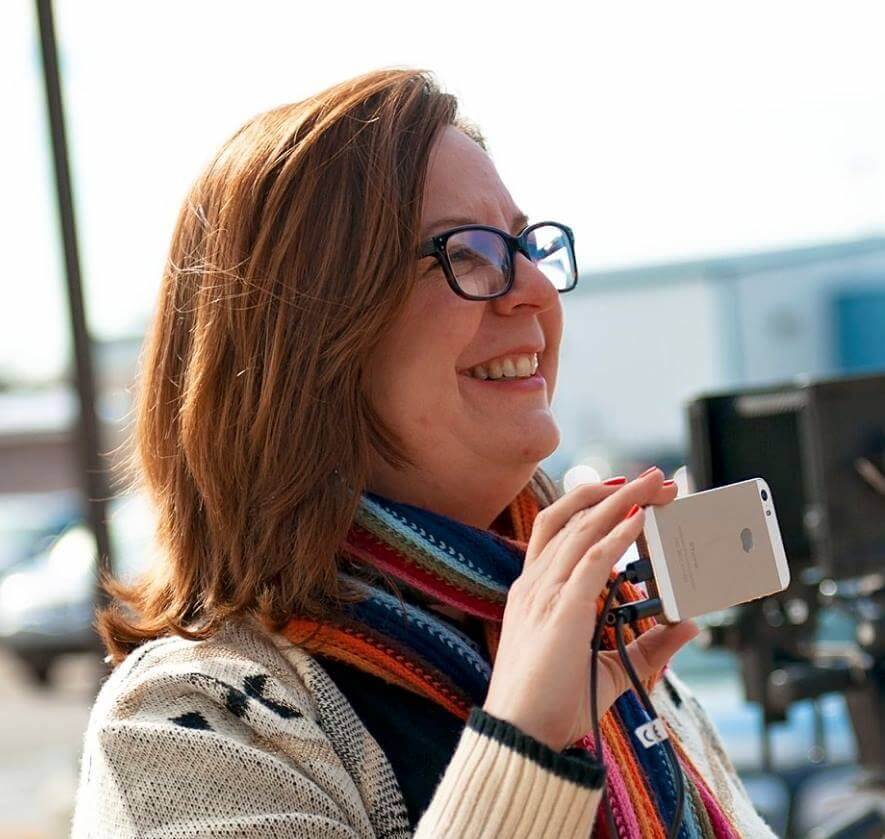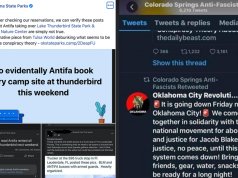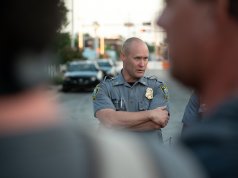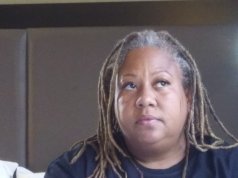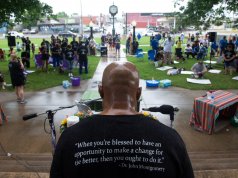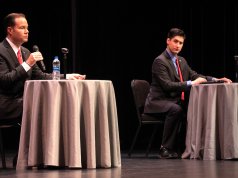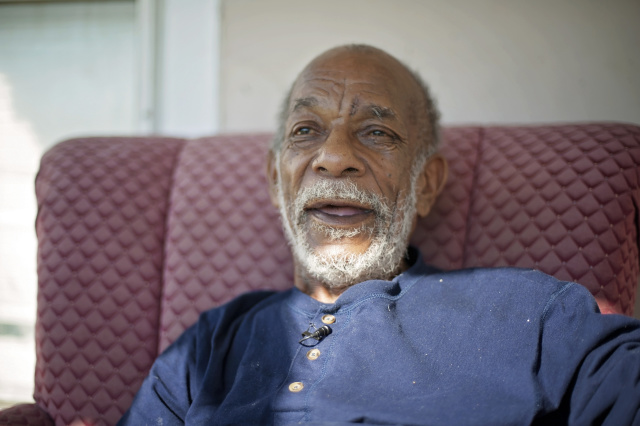
(Author’s Note: The following is part one of three “sound chapters” of Oklahoma oral black histories collected in Every Point on the Map’s work over the past two years. I thank all those who sat with us and so openly shared their hearts.)
(Editor’s Note: This story has been updated to censor letters within a racial epithet quoted by the author after reader feedback requesting the change. As published then and now, the story quotes the term in a discussion of racism and racial slurs by older Oklahomans.)
My first editorial struggle with content for my blog series, Every Point on the Map, was whether to leave the term “n****r toe” in our video from Payne, Okla.
Cognitively, I understood the aging farm couple had grown through a much different period of history than me. They had been married 65 years, with their immediate family totaling 95 members; 45 of those were great-grandchildren.
Barbara Walck was halfway through a family story about “Christmas Sacks” — candy, nuts and fruit given to community children because many of them never received any other gifts, especially not toys.
“They were too poor,” she said. Max, who was suffering from late-stage Alzheimer’s, sat by her side and listened.
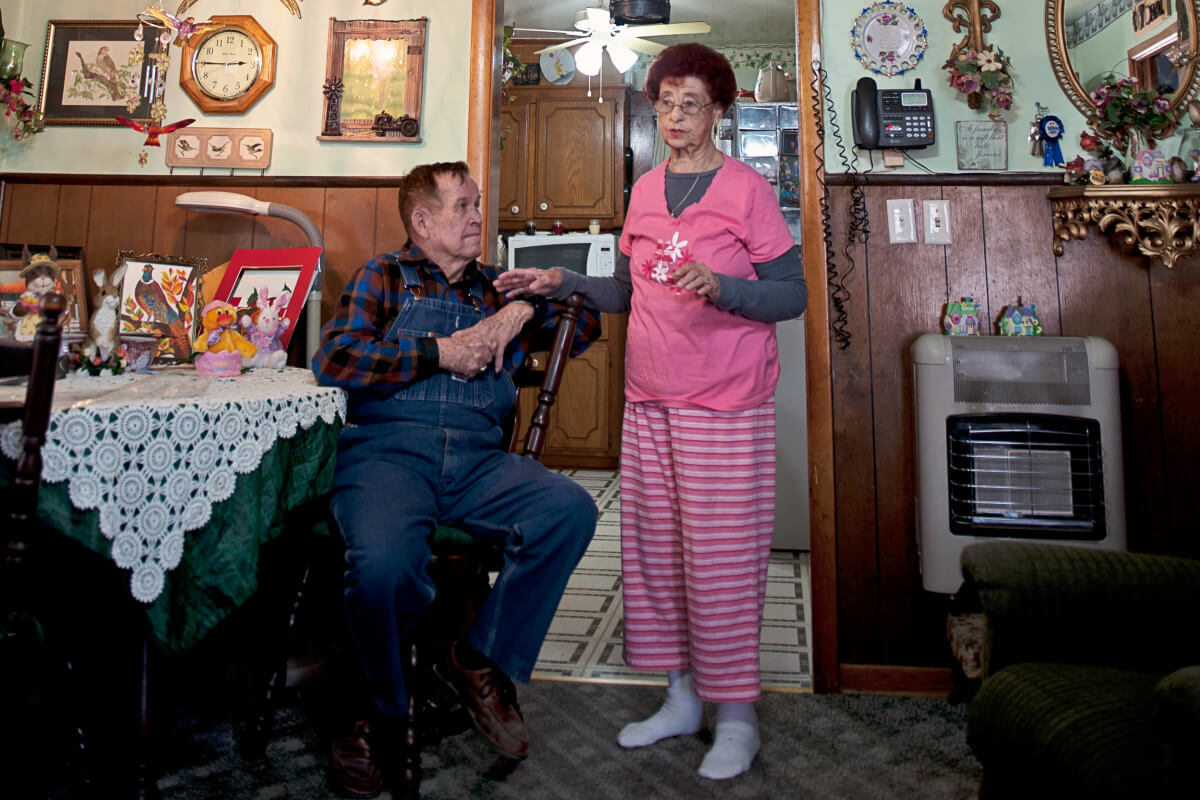
“Oh, you just don’t know how that candy and stuff smelled,” she said. “My son would sniff and say, ‘Ah, orange slices!’ or they called ‘em n****r toes back then, with the chocolate? Yeah, but you don’t call ‘em that now. Funny, they’re just humans, just like me. They can’t help the color of their skin …”
Well, no, they can’t. And neither can I.
As Barbara recalled her husband’s poverty-stricken roots, I wasn’t listening well. Images from my own youth — exiting our church single-file while each person was handed a Christmas Sack — were playing powerfully in my brain. So were recollections of my face flushing and skin burning as my grandparents or other authority figures spewed forth the N-word during discussions, jokes or complaints. Even as I write this sentence, I’m feeling an emotional reaction.
As an elementary student of the ’70s, we were taught those words were not OK. Adult offenders knew this too — racial slurs were accompanied by glances around to check earshot range, or they were said with an exchange of knowing looks. These non-verbal serve-and-return interactions meant: We know this speech is frowned upon, so we’re getting away with something by saying it, yes?
My Every Point partner and daughter, Rachel J Apple, relieved the editorial guilt of somehow attempting to apologize for all the racial slurs I heard as a child. “Leave [N-word] in, mom. This project needs to represent Oklahomans, not filter them.”
Her resolve was strong compared to my lack of footing on the matter.
And, because our project “needs to represent Oklahomans,” I’ve taken some time to compile what we’re hearing across the state as we sit with our neighbors: themes of Oklahoma’s black history and perspectives to commemorate not only during February, but beyond.
Edward Casey once wrote, “But it is and by places that the most lasting and ramified connections, including personal connections, are to be made.” And, Stuart Feder said, “A sense of place, along with a sense of time, helps form our identity; together they are fundamental to a healthy mental life.”
The sounds of integration

“And, when [my school] integrated, I was the first one … the first black person to go to kindergarten at New Lima,” said Lorenzo Edwards Jr., 53, of New Lima, Okla. “To me, I was a kid, so it was all good. When I got in high school, there was a little bit of prejudice. We were the first kindergarten New Lima ever had. I was born in 1961. In 1966, some kids was prejudiced and some wasn’t, you know? Some kids we made friends with, and some we never could.
“For my kids — I want it to be better … I’ve been through it. I’m 53 years old. I think — I can’t prove it — but I think the principals were a little bit prejudiced — they was whipping us black kids more than they was whipping the white kids. They had power back in the day, you know? Every little thing we do, they was on us. But the white kids, they kinda ease up on them. And we’d go to ball games and stuff, and they’d sit around, you know, picking at us, and I would tell myself, ‘This ain’t real, this ain’t real.’ But it was. That was life, and you had to deal with it.”
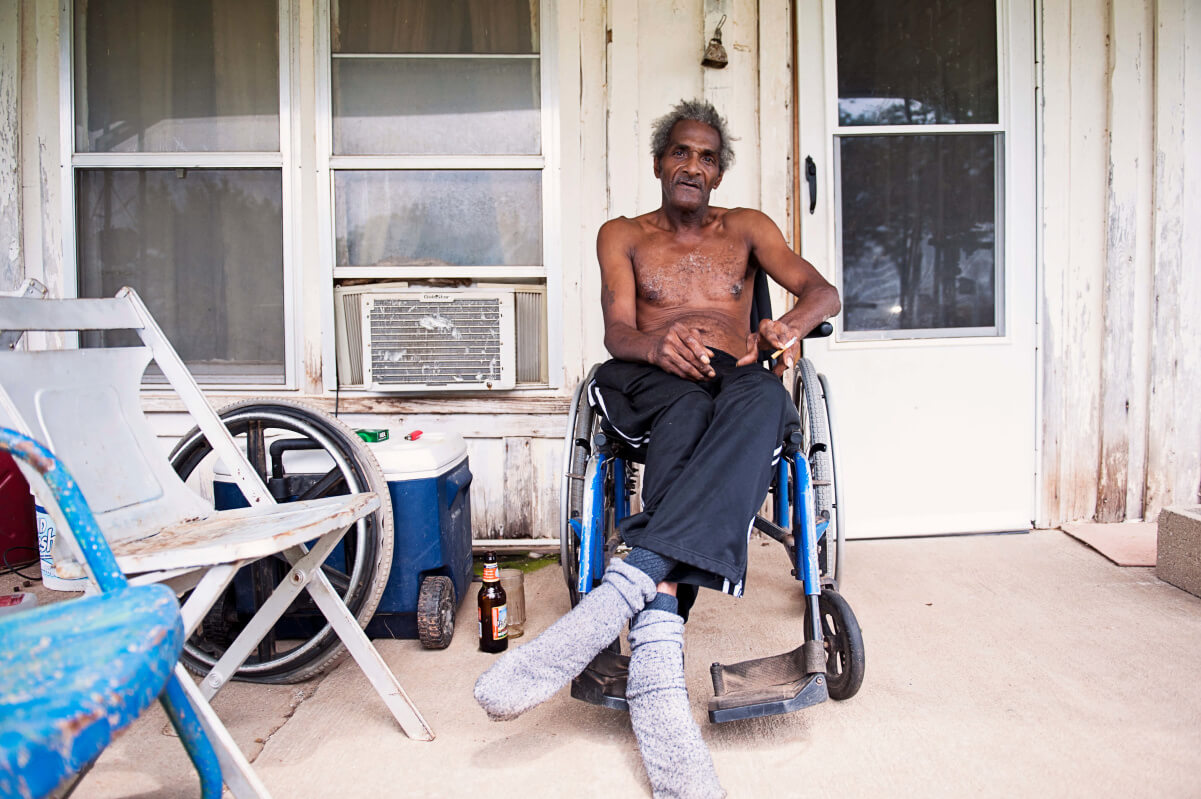
“I started school in 1960 up there, first integrated school, you know — that’s when integration started, right?” said Willie Simpkins, 62, of Cromwell, Okla. “Maybe a few started before me, but we were the full-fledged class. Blacks, whites, indians. They had all the parents — the indian parents, the white parents, the Mexican parents, the black parents — were all there that same day with the little kids between their legs … you know, getting enrolled. All the little kids looking at each other, they’re going to be your buddies for the rest of their lives … that’s cool. You ever notice little kids? They’re not prejudiced. They have to be taught that.”
The sound of resentment, tension, and change
“The prejudice needs to quit,” said Edwards Jr. “I mean, I go for a job … don’t get me wrong now … the white man get the job before the black man, you know what I’m trying to say? No matter if he got more experience or not — stuff like that is still going on and people don’t realize. Don’t let color be a problem. It’s getting better, but I ain’t sayin’ it’s there yet.”
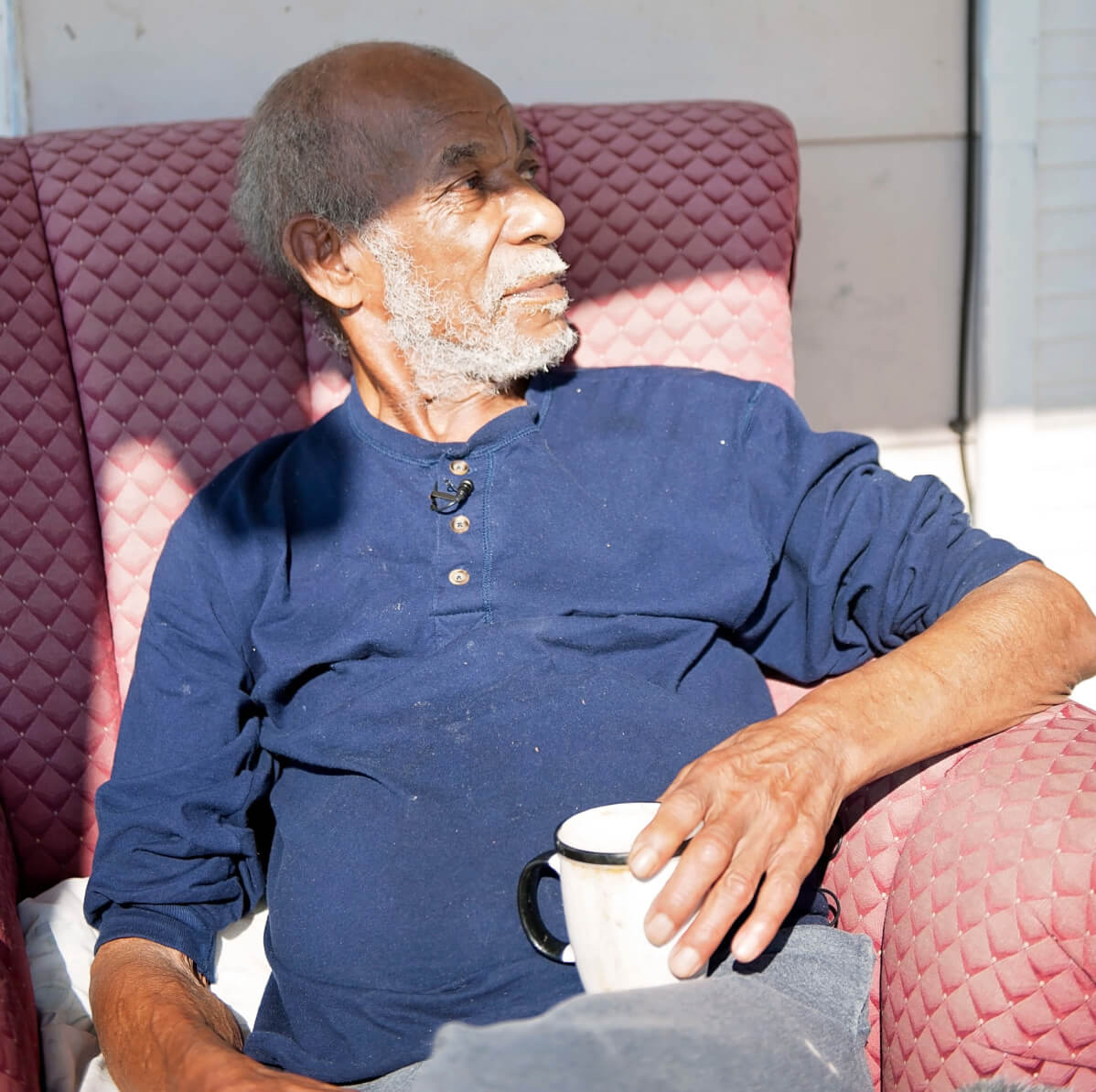
“I saw something that made me really mad,” said Ray Newton, 78, of Lexington, Okla. “We had this special [illegible, reference to a workplace] … and they would pick on you. And you know all the racial slurs, that were going around, so we came up with some of our own. And arguments would start, because maybe you had an incident the week before, and you’re mad about that, so the next chance you get you go right back and take the same attitude to them, and then it’s so forth and so on. And then, you saw the changes in people, too … with all the racial hatred and stuff.
“But after I came back and retired, and got to thinking about all the things I was exposed to. For example, when I got out of grade school and then high school, and went in the Air Force and did 20 years. But it was a learning experience for me because I had a lot of resentment in me about the way we was treated.
“But you could still see people on both sides that was realizing what was going on too … and then, as a result of that, some of they friends would turn against them, because they wouldn’t accept — totally — racism. Everybody was not a racist.
“The resentment in me is gone. It don’t even bother me anymore, but you can still see it in a person’s face; body language is what they call it. I ignore it.
“There was a guy at WalMart, he was standing in the door, and I was trying to get in. And I said, ‘Excuse me?’ He looked at me like I was crazy. And he made one of these comments like, ‘I’m tired of seeing these blankey-blank people around here.’ And I said, ‘Well, I don’t particularly want to see you either, but, if you get out of my way we won’t have this problem.’ [Laughs]
“Hostility doesn’t work — because instead of using water, you’re using gasoline.”
The sounds of racism in an Okemah café
“I remember going to Okemah and it was gettin’ lunch time, and we wanted to get a hamburger you know, and we had to go around to the back,” Simpkins said. “To the alley. Eat in the kitchen. I was a little kid, and looking up there (front of the restaurant) and I wondered why they got to eat up there, you know? They’re up there greasin’ real good, and we’re back there in the back by this hot stove, eatin’ our hamburger. ‘Cause we couldn’t eat up front, where the white folks was. But, that’s just the way it was. I was only about 6 [years old].”










